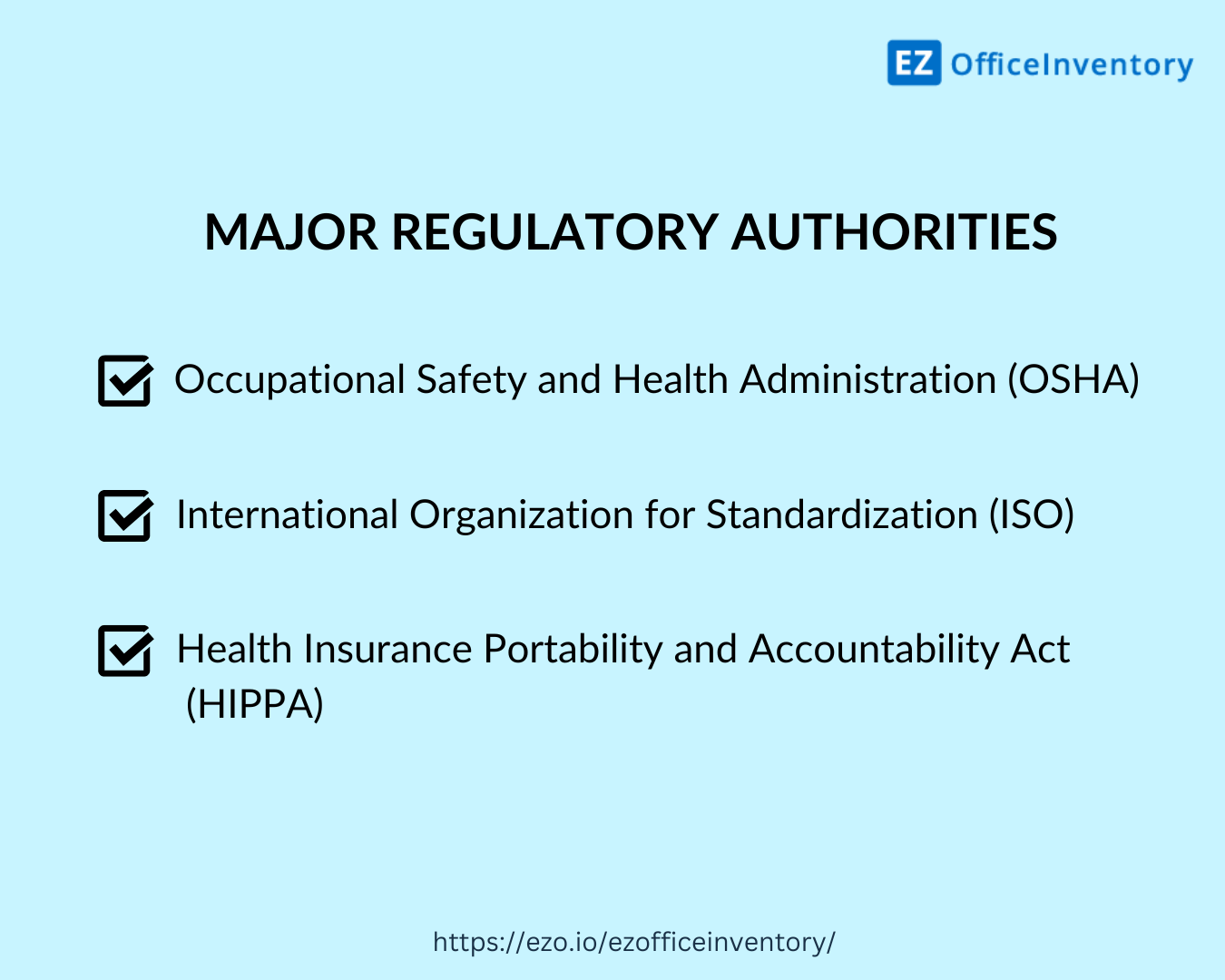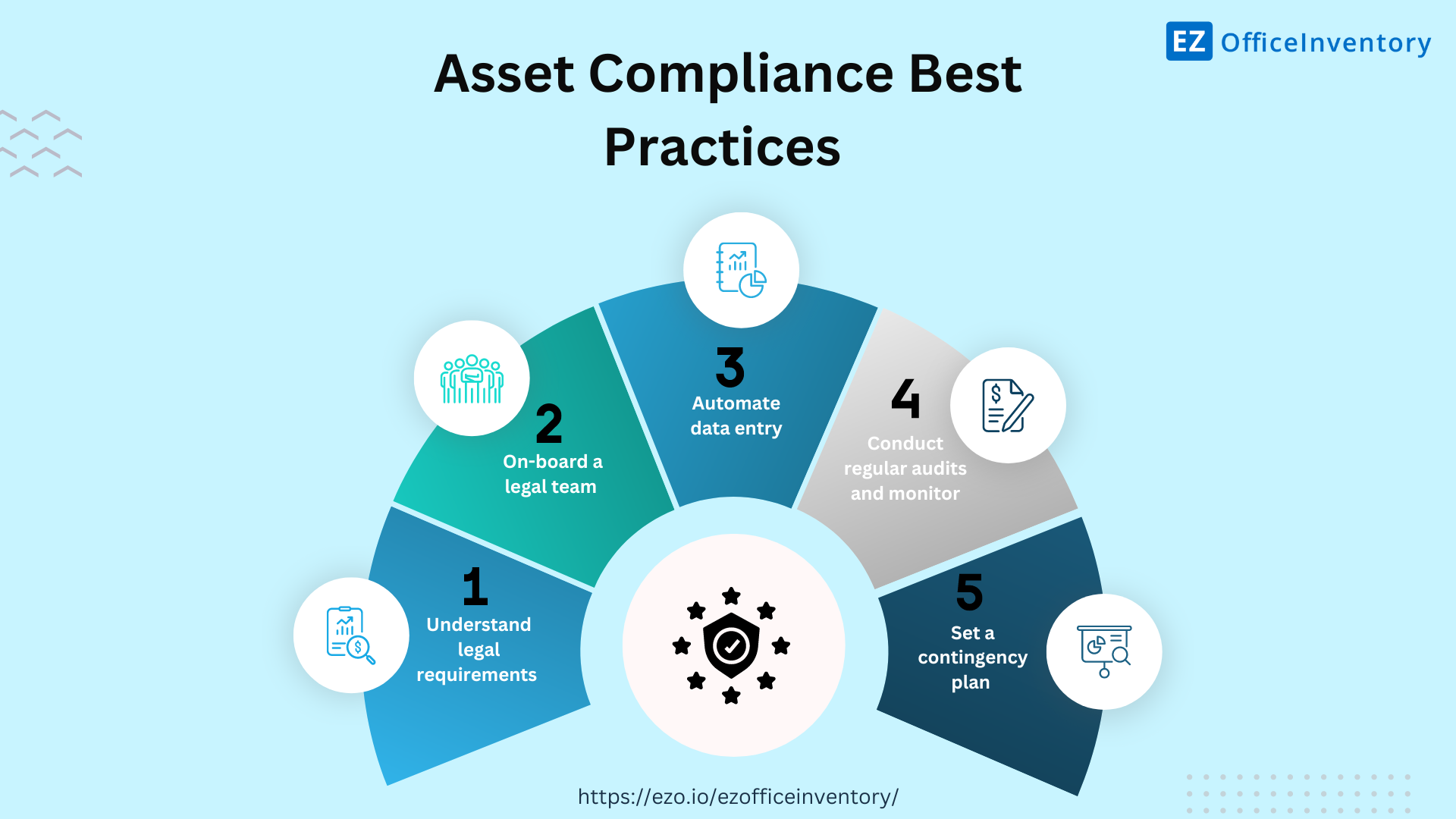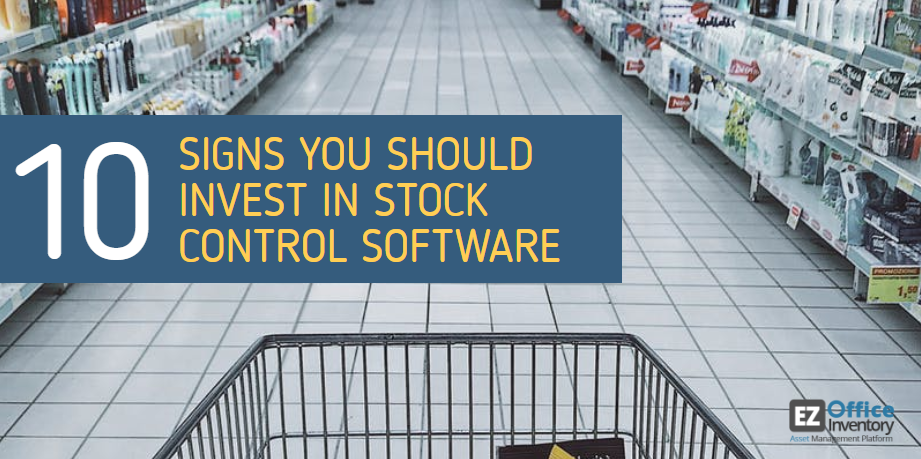If you worry about complying with regulations while managing assets, then you are not alone. 46% of asset managers find adhering to regulatory asset compliance challenging. However, with the changing technological landscape of asset management compliance, newer techniques are making the process less complex for managers.
Meeting regulations is paramount to staying competitive and relevant in your industry. Adherence to compliance helps establish credibility and survive sudden investigations by the regulatory authorities.
To ensure this, businesses are rapidly adopting automated systems for daily business operations. These tools not only save precious time but also help devise a schedule for compliance activities and send regular alerts to follow through with the schedule.
This blog takes you through the basics of asset management compliance and how using automated systems can help improve your daily workflows.
What is asset management compliance?
Asset management compliance also referred to as regulatory compliance is the process of following industry-set standards, rules and regulations, and laws to manage assets. It involves assessing your business operations from time to time to see whether you are following the established protocols or not.
Ensuring regulatory compliance can help you avoid extensive penalties and fines by staying abreast with the federal agencies’ laws and maintaining proper process documentation. Such practices help secure your brand name while keeping internal operations well-sorted.
There are two major types of compliance:
1. Internal compliance
Internal compliance deals with following standards set by the internal management of a company. It includes establishing standards and policies to develop quality operations within your organizations – these quality standards can expand to how well you manage your assets.
For example, setting regulations for the procurement of manufacturing equipment such as checking the equipment for loose screws, or any faults in functioning.
2. External compliance
External compliance majorly has to do with following regulations set forth by external legal or regulatory authorities. These regulations are legally binding and majorly determine the way organizations manage their assets, and operations at large.
Adherence to external standards not only helps improve accountability and transparency, but ensures following robust processes and procedures. For example, regulations set by the International Organization for Standardization (ISO) are mandatory for all businesses to achieve maximum safety for their employees.

Examples of international compliance standards
External bodies usually serve as internationally accredited organizations, responsible for setting up a set of rules and regulations that apply to all organizations regardless of their size. These standards are universal and help achieve a higher level of accountability in the workplace. Some examples are:
1. Occupational Safety and Health Administration (OSHA)
OSHA makes and enforces workplace safety rules and regulations to protect employees from unexpected events. These standards can be applied to almost all industries, and help identify unsafe practices.
OSHA teams are likely to conduct inspections on job sites now and then to assess how well your business is handling occupational safety. This is especially important for construction asset management to provide maximum safety to the workers and assets.
2. International Organization for Standardization (ISO)
ISO devises and publishes commercial and industrial guidelines and standards for enhanced workplace safety. The aim is to ensure efficiency and quality in terms of managing operations and adhering to global safety standards.
3. Health Insurance Portability and Accountability Act (HIPPA)
HIPPA, established in 1966, is a set of regulations and laws to protect the confidentiality of patient data. This is targeted at minimizing the misuse of data related to patient health and any medical data stored in hospital systems.
This includes having internal processes to manage the security of assets and only authorized personnel are allowed access to data and information. These regulations improve overall medical asset management.

Benefits of regulatory compliance in asset management
Modern-day asset management solutions come equipped with tools to ensure compliance with rules and regulations. The global regulatory compliance market is expected to grow to $24348.16 million by 2028 from $17135.97 million in 2022 with a CAGR of 6.03%.
Here’s how you can benefit from efficient regulatory compliance using an asset management system.
1. Risk mitigation
By adhering to industrial standards, businesses can identify compliance risks and gaps in asset management. You can easily know how your assets are being utilized to ensure you are following the established safety standards.
By storing information in silos, you put the safety of your information at a serious risk.
Minimize risks associated with handling asset information by storing information in a central repository instead – accessible only to authorized personnel. This way, not everyone can access your asset or member-related data, so your data remains untampered and safe.
2. Enhanced safety
Ensuring equipment safety on-site is critical to the overall success of your business. Well-functioning equipment determines how smoothly and efficiently your operations are running and whether your equipment is working at the best capacity.
Following safety regulations set by authorities like ISO and OSHA encourages asset managers to conduct regular safety inspections and in turn, timely repair and maintenance. Frequent maintenance checks increase the reliability of your equipment and identify potential problems in advance, like faulty wires, leaking lubricants, gear issues, etc.
By resolving these problems in time, you can avoid hefty fines and penalties associated with equipment misuse. Taking care of maintenance best practices can help improve overall compliance with asset management rules.
3. Increased risk management
When you follow international standards, you evolve your internal policies and operations to keep them aligned with the changes in laws. This is especially needed when operating in an industry with a constantly changing landscape. For instance, the healthcare industry has new regulations as with time HIPPA adds new sections in policies to cater to various healthcare needs.
This way, businesses also stay aware of the new industrial trends and practices – making it easier to adapt to changes. This gives them a competitive edge over others.
4. Strategic decision-making
With a complete asset history, you can easily assess whether you are meeting compliance regulations highlighted by authorities.
You can generate detailed reports for this purpose, and even check compliance metrics to analyze if you have achieved them over time or not. Based on these factors, you can make informed decisions regarding asset replacement, repair, and disposal. Periodically checking your metrics from time to time helps optimize compliance outcomes and achieve the overarching business goals.
Effective asset management practices help ensure compliance tracking and keeping your assets in good working order.
Statistics on the need for compliance
Compliance is one of the most significant processes of everyday business operations. Here are some statistics to help you understand how compliance-related workflows and following regulations are important for your business:

Ways to achieve compliance in asset tracking
Compliance is usually viewed as a burden by 76% of companies worldwide as they have to spend almost 4300 hours per year in an effort to achieve quality compliance. Different forms of compliance systems are in place that help share this burden, but not all are efficient.
Implementing efficient asset tracking processes to protect asset data enables businesses to remain audit-ready. Automation removes loopholes between audits and review cycles – enforcing continuous compliance as a regular practice. To ensure this, you can implement compliance by following a few easy steps:
1. Understand legal requirements
Understanding the legal requirements laid out by the regulatory authorities is the first step to staying compliant. Do extensive research, involve professionals to better understand each regulation, and mold your internal policies accordingly. Laws covering your accounting policies would be different than laws for human resource management so it’s important to note these differences.
These policies should then be communicated to the Head of Department and incorporated within the said department.
2. On-board a legal team
Get a legal team on board to properly implement and monitor policies. The legal team should be well-equipped and informed to draft legal documents, like contracts, to maximize harmony in internal and external operations.
Legal professionals can greatly help asset managers understand regulations pertaining to asset management to avoid penalties and fines. They can conduct internal training periodically to make your organization aware of legal obligations in line with your operations, like GDPR and SOC II laws.
3. Automate data entry
Employ a compliance asset tracking system to enter and automatically update asset data. Upgrade inventory levels, save complete asset information and history, and attach manuals to improve the use of assets. But, you should ensure that the data you gather is accurate or your entire compliance plan will go haywire!
4. Organize regular audits
Regular audits create room for improvement in business workflows and add credibility to your practices. They can be conducted annually or semi-annually, whatever suits your business the most. Conduct audits across locations to assess the quantity and quality of your assets, flag the unmaintained assets, and verify the items in line with guidelines.
Organize inventory even better by checking if they are checked-out and checked-in on time. Maintain the right stock levels to ensure compliance with internal policies, like having 15 extra chairs in the office at all times.
5. Ensure regular monitoring
Set goals so your team is motivated to incorporate and implement compliance into your workflows. Regularly monitor these goals to assess if you have successfully achieved them or not.
It includes reviewing, monitoring, and analyzing in detail the business processes to ensure they comply with the industrial standards. You can even implement standardized policies and practices to guarantee uniformity in compliance management. This reduces the risk of variations in company-wide implementation of regulatory policies.
6. Establish a contingency plan
It is critical to have a contingency plan in case you are unable to fully implement your compliance program. This means planning to have a structured framework/plan in place in case of an emergency. For instance, if your audit is near, but you have not fully achieved your compliance goals.
One way to do this is to have a dedicated compliance team. The team can be responsible for overseeing these contingency plans and devising solutions to unexpected risks with the help of the legal team.

Challenges in compliance asset management
Let’s look at some major challenges businesses might face in achieving full compliance:
Changing compliance standards
Evolving market trends require companies to constantly re-evaluate their quality standards. Without a regular policy review, compliance is hard to achieve.
Inadequate data recording
Without a system to record and track workflows, meeting regulations is challenging. You will not be able to generate workflow reports and your best data will go to waste.
Fragile database systems
Documenting workflows will not benefit you if you do not have a reliable system to store all that data. Businesses with fragile databases expose their internal workflow data to security breaches.
Inconsistent baseline processes
Having consistent baseline protocols and compliance documentation standards can be difficult to achieve owing to different departmental structures. This is particularly challenging for widespread businesses since each country has additional regulations suited to its business landscape.
Implementing and achieving compliance might seem a little difficult. But, you can ease up the process for yourself with continuous improvements and leveraging a proper asset management system in place.
Asset management compliance checklist
Keeping the above benefits and the best practices for implementing regulatory policies in mind, we have drafted a checklist for you to ease up the process: a compliance management checklist. You can tick mark the boxes you fulfill while coming up with a compliance program.
Here’s a sample checklist to help you understand the process:
| Action Item | Yes/No |
| Have the assets been categorized and cataloged? | |
| Have the assets been labeled? | |
| Has the depreciation been recorded? | |
| Has the technician conducted a maintenance check? | |
| Have reports been generated to assess asset compliance status and performance metrics? |
You can create the checklist, in line with your compliance goals, to suit your business needs better. Cataloging assets, recording asset depreciation, and regularly monitoring the asset performance are some means to ensure your assets comply with rules and regulations.
Enhance productivity with improved asset compliance
Asset compliance is not merely a buzzword! It is a vast phenomenon and practice that embeds effective asset management practices across all industries and businesses. It is, in fact, a much-appreciated and needed practice worldwide.
It is, therefore, wise to identify and organize your asset-tracking activities in a manner that supports your compliance aims. Following regulatory policies are mandated by international entities, and following them poses a positive impact on your organizational reputation. So, evaluate your business operations and see if you are achieving compliance most efficiently!









